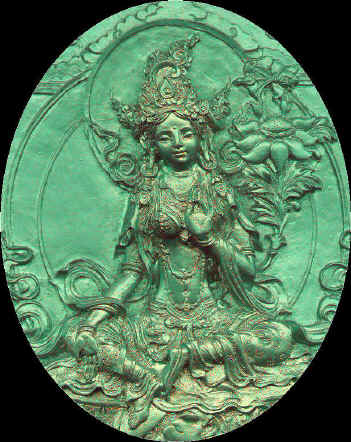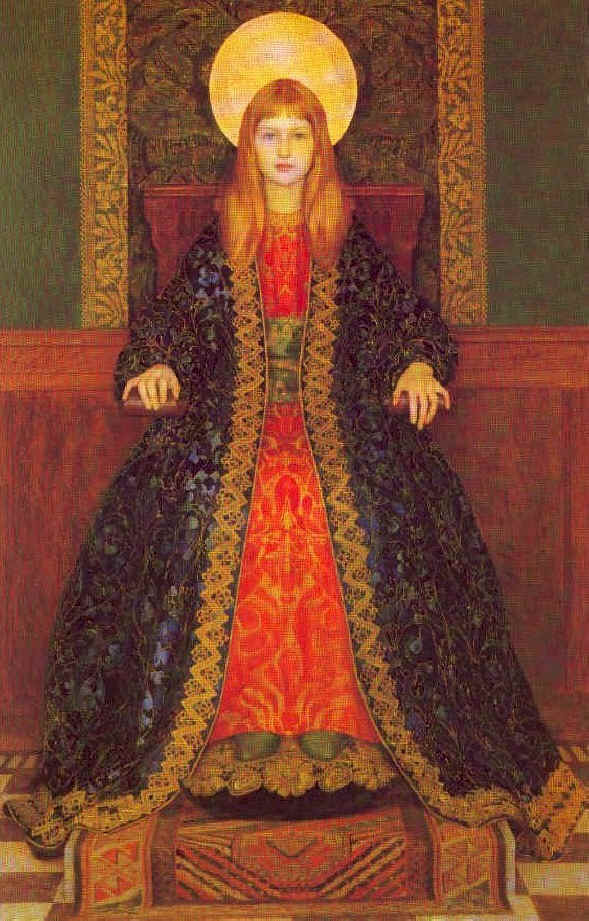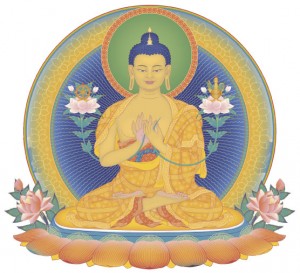| The Goddess versus the Macho Theologians During the Age of Pisces, the Supreme Being was portrayed as male: omniscient, omnipotent, dominating, controlling, vengeful and judgemental. As we move into the Age of Aquarius, the gentler feminine aspects of spirituality are re-emerging from twenty centuries of repression. Problems with macho theology If God is not omniscient in the sense of knowing the future, then neither can He be omnipotent. If He exists within time, and is subject to the uncertainties of time just like the rest of us, then time is ultimately more powerful than God. If He is omniscient and exists outside time, then he can never make a decision or choose a course of action, because he knows in advance exactly what his future actions will be for all eternity. He cannot decide to change his mind because he will know in advance when and how he will decide to change his mind, so his mind will already be made up. Such a God would be totally paralysed by his own pre-ordained future - the ultimate in feed-back loops or logical contradictions, which ever way you care to look at it. The theologians have overspecified God with power attributes to such an extent that He has become a logically impossible being. This has led many Spiritual practitioners to rediscover the feminine nature of the deity. In the Anglo-Celtic Traditions She is portrayed as having three aspects - maiden, mother and wise woman. In Tibet a more detailed enumeration is given, and She has three times seven aspects - the twenty-one manifestations of the Lady Tara . Tara is a wise and helpful enlightened being, not a projection into the spiritual realm of a long authoritarian tradition of Continental Tyrants. Too much of a good thing
And what about those light rays from distant stars which appear to have started on their journey millions of years ago? Are these fakes as well? Maybe God has constructed a vast planetarium surrounding the solar system, from which he projects the appearance of an old universe towards us in order to tempt us into disbelieving Genesis.
If God is imperfect, so that he requires our existence for some reason (eternal loneliness?) then perhaps we should regard him with compassion rather than with fear and trepidation. He would then be what the Buddhists term a 'samsaric god' - a powerful but ultimately tragic figure. But maybe a less-than-macho God wouldn't go down too well with the theologians, and certainly not with the memoids who, as the Age of Pisces draws to its close, are becoming the predominant force in most of the patriarchal belief systems (resulting in an increase in fundamentalism, intolerance, acts of terrorism, anti-rationalism, homophobia, censorship of school syllabuses and libraries, persecution of harmless pagans such as wiccans, and a general escalation of invective and paranoia).
Deconstructing the God or
Reconstructing the Goddess? God's origins go back to the decline of the Roman empire. The later Roman emperors, both Western and Byzantine, were tyrants who owned their subjects body and soul. Anyone who defied them was generally sentenced to a slow and agonising death. This earthly kingdom was extrapolated into the eternal spiritual realm by continental theologians, who imposed the memetic blackmail of the doctrine of ever-lasting hell and its torments for defiance of ecclesiastical authority. Any teachings which claimed that the individual was capable of salvation outside each particular sect were denounced as heresy. Unfortunately the Anglo-Celtic opposition to this tyrannical theocracy was smashed at the Synod of Whitby. The continental God-meme is a sociopolitical power construct, in fact a parody of a power construct, in that the power attributes have been exaggerated to such an extent that they have become logically contradictory.
Spirituality and the sense
of the numinous Some theologians may attempt a partial deconstruction of the macho-God to alleviate some of the difficulties. A more radical approach is to recognise that religion has become the enemy of spirituality. The only way out of the mess is to go back to the pre-Roman roots of our culture, put Caesar into the museum where he belongs, then examine the female attributes of divinity, which have been suppressed for so many centuries.
Attributes of the divine in
pre-Roman and eastern cultures. In Celtic times the Goddess was strongly associated with wells and springs (eg the rituals surrounding Coventina's well and the numerous Brideswells, Marywells, St.Anne's wells and Ladywells throughout Celtic Britain and Ireland). The usual explanation is that our fertility-obsessed ancestors regarded these watery orifices as the vagina or nipple of the Earth Goddess. The presence of the Sheela-na-gig in the vicinity of some holy wells in Ireland does suggest a connection with the vagina. But again, a more spiritual interpretation is possible, for we must not forget that one of the most enduring aspects of the Celtic goddess is that of the wise woman (only finally eradicated from Anglo-Celtic spirituality by the last witch-burnings of 16th and 17th centuries). In classical Greece the principal female divinity was Athene (patron Goddess of the city of Athens, of philosophy, and of all the arts and sciences of civilisation). She was first and foremost a wisdom goddess. But what does wisdom and philosophy have to do with the pregnant earth-mother and the fluid symbolism of springs and wells? To get a coherant picture we need to look to the Tibetan tradition, where ancient wisdom has survived into modern times with no intervening attempts to masculinise everything (at least not until the appearance of Mao Tse Tung). In Tibetan Buddhism, wisdom is very definitely feminine. Tara is a wisdom Goddess. Wisdom is primarily the understanding of the ultimate nature of reality - Sunyata - which is sometimes translated as emptiness, but in fact comes from a Sanskrit root meaning 'pregnant' or 'swollen with possibility'. This may account for the philosophical significance of the pregnancy symbolism. Sunyata is the ground of all being (hence the earth symbolism). Sunyata is also sometimes known as 'the plenitude of the void' and is seen as a constant upwelling of possibility, freedom and potential. Sunyata is the primary fountainhead of the flow of free-will (non-determined action, intuition and creativity). Only by having the ultimate nature of sunyata can anything change or develop or be created. 'Water symbolizes the whole of potentiality; it is fons et origo, the source of all possible existence' - Mircea Eliade. Hence the well and spring symbolism may have a meaning which transcends the cruder interpretation of physical fluids. Caesar-in-the-Sky has been so overspecified with superlatives, especially with the fatal feedback loop of omniscience, that he has been constructed into what philosophers would call a 'logically necessary being' (ie a changeless, inherently existent being ). But according to Buddhist philosophy nothing can be inherently existent, there is no such thing as a logically necessary being, and anything than cannot itself undergo a change of state cannot interact with anything else. In contrast, the Goddess is not a static, stagnant, inherently existent monolith. She is the clear wellspring of liberation, and the source of all the potentials and possibilities which flow out of the ground of being. For Goddess resources and links visit THEALOGY
Goddess in the aspect of the maiden at full moon
- Sean Robsville Christian versus Buddhist worldviews |


